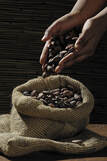 Introduction For centuries, cacao, the raw ingredient from which chocolate is made, has been treasured not just for its delectable flavor but also for its remarkable health benefits. Packed with powerful compounds and nutrients, cacao has gained recognition as a superfood with a host of positive effects on both physical and mental well-being. In this article, we'll delve into the bittersweet truth about cacao and explore its numerous health benefits. The Cacao Powerhouse Cacao comes from the cacao bean, the seed of Theobroma cacao, a small evergreen tree native to the deep tropical regions of Central and South America. The ancient Maya and Aztec civilizations revered cacao for its invigorating properties and believed it had divine origins. Modern science has validated their intuition by discovering an array of health-boosting components in cacao. Rich in Antioxidants One of the standout features of cacao is its exceptional antioxidant content. Cacao is a potent source of flavonoids, polyphenols, and catechins, all of which combat oxidative stress and protect cells from damage. Antioxidants in cacao may contribute to reduced inflammation, better heart health, and even cancer prevention. Heart Health Numerous studies have indicated that cacao's antioxidant compounds can benefit heart health. They can lower blood pressure, reduce "bad" LDL cholesterol levels, and enhance blood vessel function. This combination of effects may reduce the risk of heart disease. Mood Enhancement Cacao contains several feel-good compounds, including serotonin precursors and anandamide, often referred to as the "bliss molecule." These substances have the potential to boost mood and induce a sense of well-being. This may explain why people often turn to chocolate when they need a mood lift. Cognitive Function Cacao has shown promise in supporting cognitive function. Flavonoids in cacao can increase blood flow to the brain, which may improve memory, attention, and cognitive performance. Some research suggests that regular consumption of cacao could help slow age-related cognitive decline. Mineral-Rich Cacao is a mineral-rich food, offering a substantial amount of magnesium, iron, and potassium. Magnesium is vital for muscle and nerve function, iron helps prevent anemia, and potassium supports cardiovascular health and muscle contractions. Improved Skin Health The antioxidants in cacao can be beneficial for the skin. They help protect against UV damage, reduce wrinkles, and enhance skin hydration. Consuming cacao, along with using cacao-based skincare products, may contribute to a radiant complexion. Selecting the Right Cacao To reap the maximum health benefits from cacao, it's essential to choose the right kind. Raw cacao or high-quality dark chocolate with at least 70% cacao content are the most nutrient-dense options. These forms retain more of cacao's original antioxidants and beneficial compounds. Conclusion Cacao, the basis of one of the world's most beloved treats, transcends mere indulgence. It is a powerhouse of antioxidants, minerals, and mood-enhancing compounds that provide a wide array of health benefits. While cacao itself is quite healthy, its transformation into sugary milk chocolate or heavily processed confections diminishes its advantages. So, when indulging in cacao, opt for dark chocolate or raw cacao products to savor not only the flavor but also the countless health-boosting properties it offers.
0 Comments
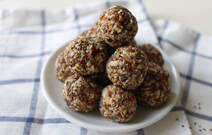 In the world of superfoods, one remarkable root has been making waves for its numerous health benefits and potential to boost energy levels, enhance mood, and support overall well-being. Meet maca, the Peruvian root vegetable that has been consumed for centuries due to its exceptional nutritional value and medicinal properties. In this article, we'll explore the fascinating world of maca, shedding light on its history, composition, health benefits, and how you can incorporate it into your daily routine. A Brief History Maca (Lepidium meyenii), also known as Peruvian ginseng, hails from the high-altitude regions of the Andes Mountains in Peru. Indigenous people have been cultivating and consuming this hearty plant for over 2,000 years. Traditionally, maca was treasured for its energy-boosting and fertility-enhancing properties. Composition and Nutritional Profile Maca is often revered as a nutritional powerhouse, and for a good reason. This root vegetable is rich in essential nutrients, including:
Maca is available in various forms, including powder, capsules, and liquid extracts. Here are some creative ways to incorporate maca into your daily diet:
Maca, with its rich history and impressive nutritional profile, has rightfully earned its place as a valuable superfood. Whether you're seeking an energy boost, hormonal balance, or improved overall well-being, maca may have something to offer. As with any dietary supplement, it's essential to consult with a healthcare professional before adding maca to your routine, especially if you have underlying health conditions or are pregnant or nursing. With its diverse potential benefits and versatile culinary applications, maca is a natural addition to a balanced and healthy lifestyle.  After not having worked out for a while, and then getting back into the gym, I was puzzled by the lack of muscle soreness as I increased my weight during strength workouts. I thought maybe I wasn’t pushing hard enough. Then I realized that I normally eat foods that are helpful for muscle recovery, and therefore was healing well without the usual soreness that comes with intense training. Here are those foods; incorporate them into your post workout meals for optimal regeneration. 1. Tart cherries When you strength train, you actually cause microscopic tears in your muscles. Tart cherries can promote faster healing, leading to reduced strength loss and improvement of endurance exercise performance. Cherries are high in polyphenols, flavonoids and anthocyanins, which lessen oxidative damage and reduce toxins in muscles. Cherries are also anti inflammatory, a source of fiber, low calorie and rich in vitamin C. Tart cherries are best, but any cherries will have helpful properties. Any form of cherry will do – dried, fresh, frozen, and juice! Try a cherry protein recovery bar or a red antioxidant smoothie after your workout. Tart cherries also contain melatonin and can help with sleep. Since sleep is also very much needed for recovery, you get two benefits in one! Have some Cherry Moon Milk before bed or a slice of raw cherry pie for a healthy after dinner dessert. 2. Turmeric Healing and muscle growth itself causes inflammation. Inflammation isn’t necessarily a bad thing; it means your body is working to counteract any issues. (chronic inflammation from a poor diet and lifestyle is a different story.) However, you don’t want to continue to be inflamed. Long term inflammation isn’t healthy and can be uncomfortable, causing muscle soreness and joint pain. Turmeric has anti oxidant and anti inflammatory properties and can reduce the pain that comes with repetitive trauma, leading to faster recovery and increased performance. Turmeric may even help with fat loss as it slows down the division of fat cells. You do need to consume black pepper or a healthy fat such as grass fed butter or coconut oil with your turmeric in order to absorb it well. A yellow anti inflammatory smoothie, a turmeric wellness shot or Moroccan spiced crunchy chickpeas make great post workout snacks, or have tandoori chicken for dinner! 3. Spinach Popeye was onto something. Spinach can replace electrolytes such as potassium and magnesium lost while sweating, helping to prevent muscle cramps. It’s rich in calcium, which along with your weight bearing exercises will help to keep your bones strong. Spinach is also a good source of iron. It can boost your metabolism and the phytoecdysteroids in spinach increase human muscle growth and help the body adapt to stress. Have a green smoothie post workout or a spinach salad for lunch to get in this important vegetable. 4. Green Tea Hydration is important, especially during and after a workout. Drinking green tea post exercise provides you with antioxidants such as catechins to help boost immunity and burn body fat for energy. It can also prevent the decrease in iron that comes after a workout. While iced green tea (unsweetened of course) is a great way to hydrate, try a match latte to warm up on a cold day after exercising outdoors. You can “eat”’ your green tea too; make a salad dressing, cookies or even use it to make a healthy breading for fish. 5. Grass fed low fat cottage cheese Protein is important after a workout. Cottage cheese contains both whey protein and casein protein. Whey protein is good for quick replenishment, and the casein, which is absorbed more slowly, helps you to continue recovery for a longer period of time, including while you sleep! Because dairy products also contain carbohydrates, cottage cheese helps to replace the glycogen, which is the “energy” stored in your muscles. Weight bearing exercises are great for bone strength, and cottage cheese provides calcium to add to it. Try a fruit bowl with cottage cheese as a snack. 6. Sweet Potatoes When you exercise, you use up the glycogen (energy) in your muscles. The complex carbs in sweet potatoes help to replenish those stores, as well as keeping your blood sugar steady. They are also a good source of anti oxidants to protect your cells and help your muscles recover and rejuvenate. The fiber helps you feel full and keep from overeating! 7. Salmon Salmon is rich in omega 3 fatty acids which prevent damage from oxidative stress. It can reduce blood clotting factors to help protect your heart, lowers triglycerides and blood pressure, and increased your HDL’s (good cholesterol). Salmon can reduce the inflammation at the cellular level to lessen pain and soreness. Salmon also has vitamin D to support immune function and B vitamins which help breakdown nutrients into energy. The B12 in salmon supports aerobic energy metabolism by producing red blood cells to help transport oxygen. 8. Bananas Bananas are a great post workout food! The potassium in bananas help replace electrolytes lost during sweating, reducing muscle soreness and speeding up recovery. The carbohydrates can rapidly replenish your glycogen stores. Since bananas have a natural sweetness, they can help you cut back on sugar. You would still need to replace protein and sodium, so pair some nut butter with a banana for a healthy post workout snack. 9. Whole Eggs Eat the whole egg. Egg whites are a good source of protein and amino acids, but the yolks have B vitamins and choline which can delay muscle fatigue. Whole egg consumption will help you repair and recover significantly more than whites alone. Other nutrients found in this near-perfect food include omega 3 fatty acids, vitamins, phosphorus, iron, calcium and zinc. 10. Nuts and Seeds The antioxidants in nuts and seeds can help enhance performance. The omegas help fight inflammation. The protein works on muscle repair. The zinc boosts immunity. Need I say more? While all nuts and seeds are beneficial, the best nuts include almonds, pistachios, pecans, macadamias, cashews, walnuts and brazil nuts. Try chia, hemp, pumpkin, flax, sunflower and sesame seeds for all of these benefits. Try combining these foods for an easy way to get them all in. A trail mix with nuts, seeds, dried cherries and unsweetened banana chips makes a good portable snack. Scramble up some eggs with spinach, smoked salmon, sweet potato, turmeric and cottage cheese for a power packed hash. Wash it down with green tea and watch your muscles grow!  It’s springtime, and I’ll bet that you are doing some spring cleaning around your home. You should also consider doing a spring cleaning of yourself! Doing an annual or even seasonal detox can be very beneficial for your health and well-being. Don’t get me wrong; I am not talking about using all of those detox products you may find on the internet or at the health food store. Many of them can often be more harmful than good. You may also hear from those who practice conventional or allopathic, non-holistic medicine that our body does all of the detoxing we need and that it’s unnecessary to even think about something like this. While it is true that we have a fantastic system in place for detoxification, it is possible for our liver, lymphatic system, etc to become overloaded and therefore not work as efficiently as it was designed to do. The kind of detoxing I am referring to is merely helping your body out. It doesn’t involve fancy products or processes, but rather simply giving your body a break from toxic input so it can do its job and not get overworked, while at the same time ensuring all of the raw materials are there that it needs to function. WHY DETOX? Toxins can: Make and keep you fat Damage cells with slow metabolism Contribute to disease Bio-accumulate over time from your conception and every day after through water, air, dust, food, soil, chemicals, emf’s and stress. An overload of toxins can cause inflammation, free radicals and autoimmune problems, all of which can lead to increased risk for cancer, central nervous system disorders, hormonal imbalances, an impaired immune system and FEELING LIKE CRAP! If you live in today’s world, chances are you could benefit from a detox. However, the following is a list of symptoms that can indicate that your body’s natural detox system could use a little help:
Look at your lifestyle
STEP 1 – DETOX YOUR DIET Try to eliminate consumption of pesticides and herbicides buy purchasing organic produce when possible. Not everything has to be organic. Check out the EWG’s dirty dozen and clean fifteen lists to see which the biggest offenders are, and start with those. Check out local farms as the organic “certification” can be expensive, and many small farmers may be using organic practices even if they aren’t “certified”. If you can’t get organic then make sure you wash and peel your produce. Some foods have natural toxins, much like a self-defense mechanism. These include peanuts, raw mushrooms, and potatoes with a green tinge (called solanine). Avoid these when possible. In addition, some people may be sensitive to nightshade vegetables (all kinds of peppers, tomatoes, eggplant, paprika, potatoes and tomatillos). It may be worth eliminating these from your diet for a period of time to see if your symptoms improve. Avoid antibiotics and hormones buy purchasing organic and grass fed animal products, wild caught fish and filtering your drinking water (due to run-off from farms, flushed medications, etc). Consider taking a break for a month or so from the most common hidden food allergens. While you can get tested for allergens, the only way to really test for food sensitivities is an elimination and reintroduction. Taking a break from these foods can clean them out of your system, allowing you to assess if you may have a sensitivity once you reintroduce them. The most common include gluten, dairy and soy. Also try to take a break from, if not cut out completely, additives, preservatives and other chemicals. If your great grandmother wouldn’t recognize it as food, try not to consume it. Not only could you be sensitive to these items, but they aren’t good for the human body in significant amounts anyway. There are some common food preparation practices that you may want to take a break from in order to give your body a detox boost. Avoid microwaving in plastic, bleached coffee filters, nonstick pans and BPA cans and water bottles. Don’t chargrill your meats to a crisp; cut that part off and don’t eat it or better yet, marinate your meats for the BBQ and cook them low and slow. All of these practices create toxins that our bodies need to clean out. There are foods you can consume that are very beneficial for the liver and will help to keep it functioning at its peak. They include berries, green tea, broccoli and other cruciferous vegetables, beets, dark leafy greens and lots of clean water. Magnesium and vitamin C are two supplements that also lend a hand. STEP TWO: DETOX YOUR LIFESTYLE Believe it or not, stress is an actual toxin that your body must process. It also interferes with restful sleep, wreaks havoc on your hormones, and can cause physical symptoms such as skin conditions, weight gain and heartburn. Learn to manage your stress in healthy ways. Make sure that your gut is working well by getting enough fiber, water and probiotics and that waste products are leaving your body at least daily. Constipation and dehydration can make you toxic as waste products build up and cause problems. Sweating through exercise and saunas also help your body to eliminate toxins. Make sure you get enough sleep to allow your body to detox and repair. Get 20-30 minutes of daily exercise. Don’t smoke or expose yourself to a lot of external toxins and pollution. You cannot avoid everything, but if you avoid what you can and give your body what it needs to handle the rest, you’ll be fine. STEP 3 – DETOX YOUR HOME Chances are you are already spring cleaning at this time, but have you taken a look at the cleaning products you are using? Breathing them in and getting them on your skin is almost as bad as eating them. Check the labels and try to get more eco friendly and non-toxic products, or try making your own. The internet is abundant with recipes for cleaning products made from cheap ingredients from the grocery store, and they do work. Do the same with your personal and beauty products. I have a couple of recipes for you here in this post. Keep your fireplace well ventilated and your furnace filter changed. Check your home for mold and radon. Remove your shoes when indoors to avoid tracking things in. Get some houseplants. Many of them detoxify the air, and they look nice too. Just make sure if you have pets that you know which plants can be toxic to them if eaten. Take this time to take a break and give your body and mind a little help! DIY Wood Furniture & Floor Polish
DIY SUGAR LIP SCRUB
 A strong healthy immune system is key to staying well, fighting off germs and avoiding illness. In addition to practicing social distancing and proper hygiene, nutrition and a healthy lifestyle are huge factors to keeping germs at bay. 1. Eat a healthy diet -Use spices such as turmeric, garlic and ginger. You may already know that these spices can reduce inflammation and ease chronic pain, but they also support immune system function. recipe: Ginger Garlic Salmon -Eat more vegetables, especially cruciferous vegetables and brightly colored antioxidant rich vegetables. recipe: Cauliflower Risotto -Try a variety of mushrooms, especially the Asian variety such as shiitake, maitake and oyster -Eat antioxidant rich fruits, keeping higher sugar fruits to moderation (tropical like bananas and pineapple, and dried fruit -Have a nutrient rich breakfast that includes protein -Eat foods rich in zinc and selenium, such as fish, shellfish, meat, poultry, nuts, seeds and beans. recipe: Shellfish Paella -Insure with supplements – take a good quality multivitamin and additional vitamin C daily. 2. Get some sun and take vitamin D Since it’s now springtime, get outside! Even though we are practicing social distancing, take this time to enjoy outdoor activities. Getting just 15 minutes of sun on face and arms daily can help give you a boost. If you plan to be in the sun longer than that, make sure to use sunscreen, sleeves and a hat for protection from harmful UV rays. In addition, take 1000iu of vitamin D daily. Depending on where you live (pretty much north of Florida) you may still not be able to make enough vitamin D from sunshine alone. 3. Manage stress A pandemic can be scary. But panic buying, hoarding and watching the news all day won’t do your immune system any favors. The mind/body connection is very powerful, and if you stress about getting sick, chances are you will get sick. You may have genuine things to be concerned about, such as loss of income due to shelter in place, so don’t add to your worry by stressing over things you have no control over. Instead, try to make contingency plans to help solve your temporary issues and then move on. Having a plan can make things a lot easier. In addition, practice stress management regularly, even if you don’t think you are stressed. Here are some ideas: -meditate -have family members give each other mini-massages / shoulder rubs -listen to music, and sing! -take a warm bath with Epsom salts and/or aromatherapy. Essential oils like lavender and chamomile can help you relax -laugh! Studies have proven that laughter is awesome medicine! You are isolating at home, so put on a funny movie and giggle away! 4. Sleep and rest Sleep is when your body and mind heal. Getting enough rest is crucial to a strong immune system. Maintain a bedtime routine in a comfortable serene bedroom, and turn off electronics an hour before bed, allowing your brain time to "power down". And if you need it, take a catnap! You’re home anyway so enjoy! 5. Stay hydrated – drink plenty of water. Try herbal teas with herbs that strengthen the immune system, such as echinacea, ginseng and dandelion. Don’t consume echinacea daily unless you are sick – you want more “bang for your buck” when you need it. If you have any medical conditions or take prescription medications, always check to make sure there are no contraindications when using herbs. 6. Get regular exercise – this is the perfect thing to do when you are outside getting your vitamin D, or you can dance while you are listening to music to reduce your stress. You can also try an exercise video or do strength training. Don’t have equipment? Use household items for weights! Also try yoga and tai chi – these will give you exercise but help with stress as well. 7. Keep your gut healthy! Your gut plays a role in your immune system. Eat well, take probiotics and consume fermented foods. recipe: Tutti Frutti Tummy Love Smoothie 8. Don’t smoke and avoid alcohol. There are many jokes going around about stocking up at the liquor store on essentials for quarantine. This is not a time to stay home and drink. Alcohol and smoking can and will wreak havoc on your immune system, making you more vulnerable. 9. Avoid sugar. Don’t panic buy junk food. Sitting around the house eating junk will surely pack on the pounds. Sugar is also a well known immune system depressant. You cannot possibly stay your healthiest when you are feeding your cells sugar. 10. Practice good hygiene and food safety. Wash those hands and store and cook your food properly! Now isn't the time to take chances! You’ve heard all of the hype surrounding superfoods, including expensive ones that you’ve never heard of and probably can’t pronounce, much less find in your local market. These are the top ten foods that I believe are truly super for optimal health, as well as affordable, easy to find and delicious! Turmeric root, a rhizome, is a potent source of antioxidants, as well as antibiotic, antiviral and antifungal properties. It is also anti-inflammatory, and an herbal remedy for aches, muscle soreness, digestive disorders and combating infections. Turmeric is a liver cleanser and blood tonic, naturally high in iron content with blood building properties especially good for anemia. It may be taken in supplement form or consumed as a spice, purchased in powder form or the root itself. It is a main ingredient in curry powder and golden milk. Make sure you consume it with black pepper to enhance absorption. In a supplement this may be listed as “piperine”. WHY I RECOMMEND IT: Turmeric is a great anti-inflammatory, relieving many aches and pains and a great boost to the immune system, not to mention a powerful antioxidant. Ginger is the knotted, beige-colored rhizome. In addition to its long history of use as a culinary spice, ginger is chiefly known as an anti-inflammatory agent, nausea reliever and digestive aid. Many people are familiar with the use of ginger ale for easing an upset stomach. Ginger has been used in traditional medicine for reducing inflammation, and studies show that ginger is effective in relieving the pain of menstrual cramps. It may be found in whole fresh root, crystallized ginger, powder, and supplement form. You can use ginger in tea, Asian dishes and baked goods. WHY I RECOMMEND IT: Ginger is another great anti-inflammatory like turmeric, and can help with aches and pains. It is also a wonderful tonic for the digestive system, and the gi tract is our second brain and a huge part of our immune system, so its important to keep it healthy. Quinoa is a pseudograin – it is actually a seed. Therefore, it has a higher protein to lower carbohydrate ratio, and is gluten-free. It is known for its greater balance of essential amino acids compared to other grain types. You must pre-rinse quinoa to get rid of the saponins, a soap like tasting substance which acts as a natural pesticide. Quinoa is available in white, red and black, the latter two having a rather different taste, a slightly denser quality and more fiber content than white quinoa. You can buy quinoa either prepackaged or in bulk bins. Quinoa may be used just as any other grain like rice, and can even be used as an ingredient in things like granola. Quinoa flakes are also available and when cooked have a texture similar to oatmeal. WHY I RECOMMEND IT: Quinoa is a complete protein, which is rare in plant foods. It is also gluten free and not technically a grain. Including quinoa in your diet can help you cut back on animal protein as well as grains, especially if you are gluten intolerant or Celiac. Raw cacao beans are the seeds or “nuts” of the cacao tree. This version, which is very different than the chocolate most people are familiar with, is a super rich source of antioxidants, bitter alkaloids and other energy enhancing phytonutrients. Cacao can be many steps up from the average chocolate bar and a much better option over sweetened milk varieties often made with extremely refined low-grade ingredients . The active ingredient in raw chocolate that acts like a plant stimulant is theobromine. Theobromine is a bitter alkaloid and is distantly related to caffeine, but they are not the same substance. Theobromine helps to dilate the blood and open the lungs. it can powerfully activate the cardiovascular system, which can have similar effects to caffeine for some individuals. Cacao is rich in antioxidants, good for your heart, and can act as a natural antidepressant, containing a powerful combination of constituents that help to uplift the spirit as well as Consuming only small quantities of raw chocolate stimulates the brain to release certain neurotransmitters, like serotonin and tryptophan. Cacao is one of the highest sources of magnesium. Magnesium is an essential component in the absorption of calcium which helps to provide strong healthy bones and teeth. Magnesium also helps to relax the muscles, nerves, reduces pain in the body and is involved in energy production. Cacao can be easily found in cocoa nibs, cocoa powder, and cocoa butter. Nibs can be added to snacks such as trail mix, yogurt, etc and add a nice crunch. Cocoa powder can be added to smoothies or desserts and is a great way to get in your chocolate without added sugar. WHY I RECOMMEND IT: Because, chocolate. Plus its high in antioxidants and feel good chemicals, as well as magnesium, which many of us are depleted in. Fermented foods are foods that have gone through a fermentation process, creating a pickled or strongly flavored condiment, food or drink. Some of the most commonly known food ferments include wine, cheese and pickles. However, there are many others that involve the use of vegetables, nuts, seeds, grains, beans or liquids such as vegan milks, teas or even water. These “cultured foods”, like sauerkraut and coconut kefir, contain communities of friendly microscopic bacteria that are extremely beneficial to the health of the colon and the entire digestive tract. There are approximately one hundred trillion microorganisms, between 400-500 different species, present in healthy human intestines. A healthy balance of gut flora, in the digestive tract and specifically the intestines is extremely important for maintaining the health of the entire body, organs and systems. Achieving a healthy ratio of bacteria and yeasts within the body helps to improve metabolism, enhance hormonal production and increases the synthesis certain B complex vitamins and other nutrients, increasing their uptake. Greater microbial biodiversity in your body keeps a stable “inner ecosystem”, improving overall health and enhancing immune function. common use of antibiotics kill the friendly bacteria and cause fungal species, like candida, to dominate. Fermented foods, including sauerkraut, kefir and others, contain billions of natural probiotic (pro-life) organisms, and can be very beneficial for counteracting the negative impacts that antibiotic (anti-life) use can have on gut flora. As the beneficial microflora grow in fermented foods, they produce enzymes that are extremely helpful to digest other foods that are eaten with them. Most all disease originates in the gastrointestinal tract, specifically the colon. When there is an excess accumulation of waste material and toxins in this region, negative implications can impact the rest of the digestive system and eventually will effect vital organs, like the kidneys and liver. This may produce various symptoms like headaches, inflammation in the joints, chronic muscle pain, skin issues and other more serious health conditions. Consuming only small amounts of enzyme-rich cultured food can be particularly beneficial as a natural detoxifier, processing undigested waste material and the toxins they create in the gastrointestinal tract. Sometimes, fermented drinks and foods have a mild laxative effect on the bowels and can help to prevent constipation and encourage regular healthy bowel movements. Fermented foods include kombucha, sauerkraut, kimchi, kefir, and yogurt. WHY I RECOMMEND IT: Keeping your gut healthy and in balance is key to almost everything else. The gut is a huge part of your immune system as well as your “second brain”. You can also purchase probiotics in supplement form. Cruciferous vegetables are composed of other health enhancing phytonutrients such as phenols, indoles, flavonoids and substances like sulforaphane. These compounds offer cancer chemopreventive effects and also, as we mentioned, help to reduce inflammation, a key factor in in many chronic diseases. a high intake of cruciferous vegetables has been associated with lower risk of lung and colorectal cancer in some epidemiological studies” and are viewed as “good sources of a variety of nutrients and phytochemicals that may work synergistically to help prevent cancer.” Broccoli, cauliflower, brussels sprouts, cabbages, radishes, etc can all be cooked in many different ways. If you think you don’t like them, try again. You can also purchase sulforaphane in supplement form. WHY I RECOMMEND IT: Cruciferous vegetables are a delicious way to prevent cancer, and can be especially helpful for balancing hormones. Many cruciferous vegetables are in season in the winter when other produce isn’t. Cauliflower is also a great low carb substitute for many starchy foods. Dark green leafy vegetables are the tender edible leaves consumed from a wide variety of plants species. Chlorophyll-rich edible greens have healing and protective assets that help to cleanse the blood, balance body pH and are an energizing superfood for boosting cognitive and immune functions. Fresh raw greens contain living enzymes and digestible proteins that are especially building for muscle and tissue strength. They are one of the highest sources of dietary fiber which helps to normalize bowel movements and has shown to be beneficial for weight loss. Dark green leafy vegetables contain high amounts of minerals and are one of the highest plant-based protein sources available. Providing all essential amino acids they help to build strength and muscle mass. Gorillas, who forage mostly on leafy green vegetables, are one of the strongest and physically powerful animals known in the animal kingdom. Adding green leafy vegetables to your breakfast, lunch or dinner can help improve your diet and offer a great way to alkalize and balance most meals. It is optimal to keep the body fluids and blood at a slightly alkaline pH of about 7.4. This helps to ensure a healthy balance of intestinal microbiota and prevents the overgrowth of fungal strains, like candida, which thrive in acidic environments. Dark leafy greens should be consumed daily. Use dark colored lettuces rather than just iceberg in your salad, drink green juices, and put spinach or kale in your smoothies. You can also purchase a “greens powder” for use in smoothies and adding to other foods if you have trouble eating greens on a daily basis. Healthy Fats – especially coconut and flax Coconut oil contains medium-chain fatty acids that are easily digested and utilized as an energy burning fuel source, rather than stored as body fat and a natural antiviral agent helpful for eliminating parasites, viruses, bacteria, yeast and fungi. Consuming moderate amounts of the oil has also been shown to increase HDL “the good cholesterol” and improve thyroid function as well as have a neuroprotective effect on the brain. Flaxseed oil, or linseed oil, is a valuable source of omega-3 fatty acids. Flax seeds are also a valuable way to get this in. Other good fats include olives and olive oil, and avocados and avocado oil. Nuts, seeds and cold water fatty fish should also be consumed. We need fat to lose fat, stay warm and have properly functioning bodies and brains. Cook with these healthy oils, add olives and avocados to salads and sandwiches, and have nuts and seeds as snacks. Nut and seed butter can also be added to smoothies. WHY I RECOMMEND IT: Fat makes us feel satisfied, which means we will eat less. The fatty acids are also fantastic for our skin and brains, neither of which we want to decline as we get older! Berries including grapes and cherries (botanically berries) Noni, Acai, Golden, Mulberries, Maqui, Acerola cherries, Amla, goji – we have all heard of these “superfood berries” but they can be hard to find and expensive. If you are looking for a delicious way to add fiber and antioxidants to your diet, look no further than common berries. Raspberries, blueberries, strawberries and blackberries are sweet, easy to pop into your mouth as a snack and a much healthier choice than a candy bar. All are anti-inflammatory, rich in flavonoids and carotenoids, offer immune-boosting antioxidant activity and: 1. Are an excellent source of phytonutrients, and a good source of vitamin C and fiber. 2. Provide folate, vitamins B2 and B3, magnesium and other essential nutrients. 3. Contain ellagitannins, natural health-protective compounds that appear to have potent anti-cancer activity. 4. Have a lower glycemic load than tropical fruits. For a quick and simple nutritional boost, top your cereal with a wide range of colors of berries, add some to a smoothie or salad, use them in sauces and baked goods, or enjoy them on their own. As with other berries, because commercial strains may be heavily sprayed with pesticides, I recommend buying only organic varieties. Red grapes and cherries also fit into this group. Frozen may be better than fresh when not in season. Raw local honey is probably one of the world’s most popular alternative sweeteners created by one of the most incredible creatures of the earth, the honeybee. Bees collect the sugary nectar from flower blossoms and convert it into honey through a regurgitation and water evaporation process. It is a sweetener that actually offers some nutrition. Containing both bee pollen and propolis, honey provides antibacterial, antifungal and antiviral properties that have been utilized throughout the ages to reduce inflammation, boost the immune system and aid digestive functions. Consuming honey that is local to where you live can help with allergies. A spoonful a day can help to desensitize you to your environmental allergen. WHY I RECOMMEND IT: its great to treat allergies, keep you well, and as an alternative to sugar – when you want something sweet, honey can be a great substitute and actually include some benefits. Water Yes, water. WHY I RECOMMEND IT: We are mostly water. You would die in three days without it. If you wait until you are thirsty, you are already dehydrated, Your body processes work better, your brain works better, and you look better. Soda, juice and other sweet beverages are not water. Drink your water. Have you heard of forbidden rice? Black or purplish in color, this rice is a powerhouse of antioxidants. It’s “forbidden name” comes from it’s status in ancient China as a status symbol for the wealthy and royalty. It was also known as “longevity rice” due to its health value, and was forbidden from anyone of a lower status to eat it. Nowadays it is widely available and can be found at almost any major grocery store. Black rice is high in flavonoid phytonutrients and anthocyanin antioxidants. These are the same antioxidants you find in deep red and purple fruits and vegetables, such as berries, that are known for reducing free radical damage and inflammation, both conditions that cause premature aging and disease. These antioxidants are great for cancer prevention, protection against heart disease and increased brain function, as well as lowering blood pressure. Black rice is also high in fiber which aids in good digestive health as well as keeping your blood sugar balanced and keeping you full. It’s naturally gluten free, contains iron and vitamin E and can help detoxify the liver. As with many other varieties of rice, it can contain some traces of arsenic. Combat this by cooking your rice with a higher water to rice ratio much like the method used to cook pasta. Arsenic is water soluble and will go down the drain. Remember to practice portion control and have your rice with some fat and protein for the best health benefits if you include this grain in your diet. Try my recipes for Black Rice Pilaf, Purple Forbidden Rice Pancakes and Exotic Rice Pudding! Recipes coming soon! Follow me on Facebook for the latest updates! 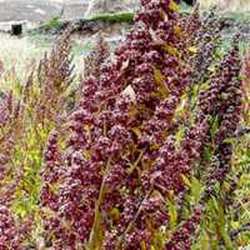 Quinoa (keen-wah), while most often touted as a grain, is actually a seed. It is more closely related to sesame seeds and chia than it is to wheat or rice. However, it is very "grain-like" and makes a great substitute for any grains in almost any dish. Quinoa is gluten free, so it's a wonderful option for those of you who, like me, cannot or choose not to eat gluten. Quinoa is so much more than a gluten free option. Quinoa is one of the few foods that is considered to be a complete protein. This makes it also a great vegetarian protein source. In addition, it is high in fiber, iron and calcium. READ MORE Do you have a spice rack full of dried herbs? How old are they? Did you know that dried herbs begin to lose potency after a few months? So that 3 year old jar of basil isn’t doing your marinara sauce much good. READ MORE
|
AuthorStevie Winsborrow is a professional chef, functional and integrative nutritionist and holistic health coach, as well as a published author, TV and radio personality and Editor In Chief of Align Body & Soul magazine. Archives
October 2023
|

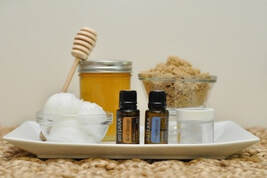
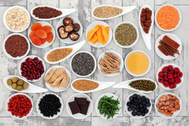
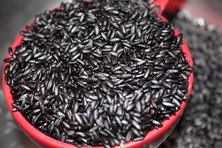
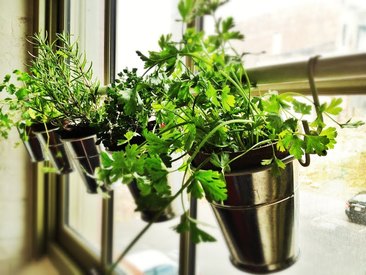

 RSS Feed
RSS Feed
